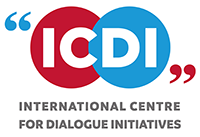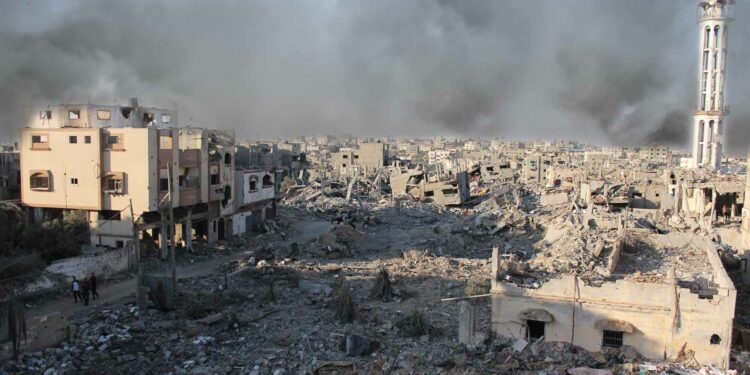An announcement this month by Iran and Saudi Arabia to restore diplomatic relations is expected to lead to more talks on a host of geostrategic issues affecting the two countries. Unless the China-brokered deal breaks down, the negotiations between the two countries, seven years after Riyadh severed ties with Tehran, could mark a shift toward building locally derived diplomatic solutions for tensions in the Middle East and beyond.
A victory for peace, the deal came after more than a year of mostly quiet negotiations which Oman, Iraq, China, Russia, helped facilitate, and the United States welcomed. According to Kayhan, a newspaper loyal to Supreme Leader Ayatollah Ali Khamenei in Iran, the goal of the deal is to work out a host of issues despite expected setbacks in any deal that would make the task of diplomacy harder and yet binding as long as Iran and Saudi Arabia commit to reopening embassies and missions, and respecting the sovereignty of states and non-interference in their internal affairs.
Yemen a key focus of the deal
The ongoing conflict in Yemen is central to why Saudi Arabia built a deal with Iran, according to sources in Tehran. To build the deal, President Xi Jinping advanced the initiative when he traveled to Saudi Arabia in December 2022, which was discussed again when President Ebrahim Raisi visited China in February of this year. Iran wants Saudi Arabia to lift Yemen’s economic blockade and preserve its territorial integrity. In return, Riyadh may want Iran to halt delivering arms to the Houthis, an end to Houthi military strikes against Saudi targets and interests, and a deal between the group and the Saudi-backed Yemeni government which the United Nations has also called for.
Israel’s security ties with Bahrain and the United Arab Emirates (UAE) through the 2020 US-brokered Abraham Accords, and ambiguities as to whether Saudi Arabia might join the accords, are also key reasons why Tehran pushed for a deal with Riyadh. Iran is now leading talks with the UAE and Bahrain, and says it wants to build a strong region. This means advancing a new security architecture in the Persian Gulf in which Iran works with the Gulf Cooperation Council (GCC) states of Saudi Arabia, the United Arab Emirates, Qatar, Kuwait, Bahrain, and Oman.
Diplomatic initiatives to work toward peace are plenty in this region, at least since the US invasion of Iraq in 2003, and subsequent conflicts across the Arab world not just in Iraq, but in Syria, Lebanon, and Yemen. Maritime security, for example, is vital to the survival of the Iranian and GCC economies in a conflict-prone region. Saudi Arabia and Iran can ensure safe navigation in the Persian Gulf, the Bab-el-Mendeb and the Red Sea. Iran is a member of the Indian Ocean Rim Association. Saudi Arabia is part of a Gulf-Horn Red Sea initiative, a peace agreement between Ethiopia and Eritrea. Additionally, Iran reached out recently to Saudi allies Egypt and Jordan over issues that advance Red Sea cooperation, boost Iran’s sanctioned economy, and help Saudi Arabia reach its Vision 2030 economic and development goals.
Building up Iran’s “axis of resistance”
Iran says it will build up its axis of resistance, designed to ensure its security in a volatile world, according to its Foreign Minister Hussein Amir Abdollahian, despite the deal with Saudi Arabia. But with a deal, Riyadh is in a better position to convince Tehran to redirect its moral and material support for members of this axis which includes a host of state, sub-state, and non-state actors. This redirecting of Iranian policy could potentially mobilize the axis of resistance to help restore the dignity of the Islamic umma by mitigating tensions in Iraq, Palestine, Lebanon, and Syria, without needing to isolate Iran’s regional allies. It helps that these allies, all of whom are either members of the axis or sometimes facilitate its policies, support the new deal with Saudi Arabia. Iraq says it is keen to serve as a bridge between Tehran and Riyadh. The Palestinians and the Iranian-backed Lebanese organization Hezbollah welcomed the Iranian-Saudi deal. Syria’s potential return to the Arab League, in return for a reduced Iranian footprint that would not compromise Iranian economic investments in the Arab country, could be explored through further talks between Riyadh and Tehran.
China takes a leading role
For now, China’s greatest gain in brokering the agreement between Iran and Saudi Arabia is that it comes at no cost to Beijing. Instead, the deal places the burden of responsibility on the two sides to deliver support for Gulf-Asia inter-regional connectivity in the economic and security arenas. Moving forward, Beijing can consolidate the deal through ongoing Iranian and Saudi economic and trade initiatives in BRICS Plus and the Shanghai Cooperation Organization.
Additionally, China could serve as a mutual guarantor in the nuclear arena for Saudi Arabia, which seeks an advanced nuclear program, and for Iran that already possesses a massive nuclear enrichment program. As soon-to-be states to formally join BRICS Plus – who are mindful that three BRICS members are nuclear states (Russia, China, India) and two others took the nuclear weaponization path (Brazil, South Africa) – Saudi Arabia and Iran can benefit from the experience of the bloc in advancing deterrence of nuclear regimes in the Persian Gulf.
This lofty goal, which to date has not seriously been pursued, could be achieved without a cascading effect of nuclear weaponization by the Gulf states for the purpose of security, should the right policy and approaches be adopted. This would be far more than what the United States achieved when it pulled out of the 2015 Iran nuclear deal (known also as the Joint Comprehensive Plan of Action or JCPOA), three years after it was concluded. And this would be much better than an emerging anarchical, non-polar nuclear regime in the Middle East in which the Israeli and Iranian nuclear programs dominate the regional order.
A shadow of future conflict hovers over the Iranian-Saudi connection, no doubt. But the latest agreement gives Tehran and Riyadh more maneuverability to uphold the dignity of the Muslim umma, ease tensions in the Persian Gulf, advance maritime and commercial goals, and reduce threats in regional conflict zones in the Middle East, along fluid security spheres that demand non-military answers to problem-solving even on the sensitive issue of nuclear proliferation. This approach will help Tehran and Riyadh expand their deal knowing that they are weaker without it, and stronger because of it.
Banafsheh Keynoush is a Fellow at the International Institute for Iranian Studies, non-resident scholar at the Middle East Institute, and author of Saudi Arabia and Iran: Friends or Foes?







